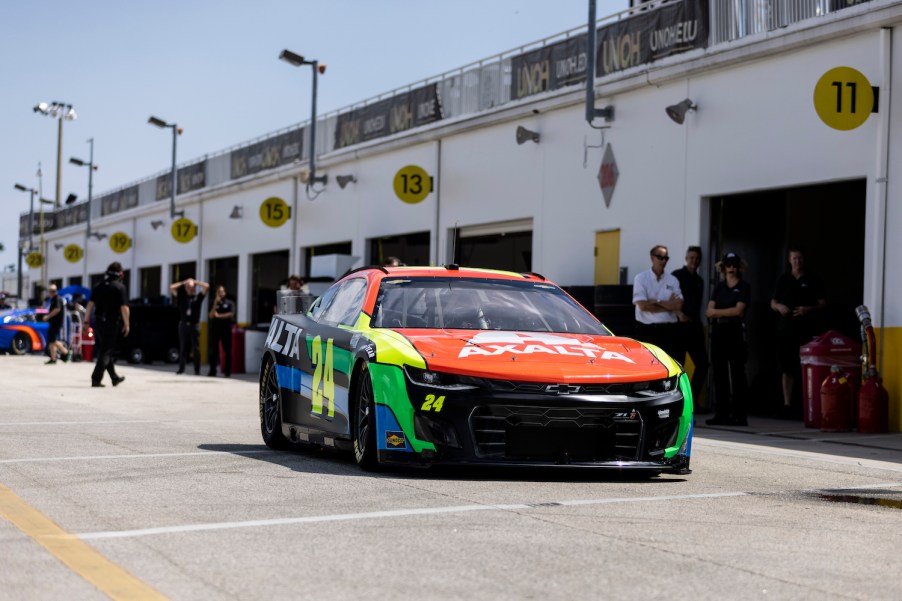
Does the Next Gen NASCAR Car Use a Corvette Transaxle?
NASCAR debuted all-new Cup cars for the 2022 season. This Next Gen car may use the same old pushrod V8 engines but it transfers the power through an all-new transaxle. This front-engine, rear transaxle layout is the same used in three generations of the Chevy Corvette. That said, the Next Gen Car’s transaxle is a proprietary unit built just for NASCAR.
What kind of transmission is in a NASCAR car?
The Next Gen NASCAR cars for the 2022 season use a transaxle unit, a transmission integrated into the rear axle. This unit is a sequential manual built by Xtrac.

A front-engine and rear-transaxle layout is a common way to better balance the weight of a sports car’s drivetrain. Automakers such as Bugatti began experimenting with this system by the 1930s. Today, sports cars built by companies such as Jaguar and Aston Martin still use this layout.
Several generations of the Chevy Corvette use the front-engine, rear transaxle layout. But the latest (C8) Corvette is as mid-engine car.
The Next Gen NASCAR transaxle transmissions are a sequential manual unit with five forward gears. This is one more gear than NASCAR’s generation-6 transmission. The transaxle is called the P1334 and every unit is built by racing supplier Xtrac.
Will the Next Gen NASCAR have a clutch?
The NASCAR Next Generation car is a true, three-pedal manual: it has a clutch. But the gearshift lever moves slightly differently: it has one forward position to downshift and one backward position to upshift. It moves much like a “ratchet” shifter in a drag racing car.

The Next Gen NASCAR stock car‘s transmission is called a “sequential manual.” This means that drivers have to shift for every gear change, just like the old “H-pattern” manuals. But the pattern is very different.
The 2022 NASCAR Cup cars do have a clutch pedal. And drivers will need to use it to shift the car into 1st gear. But after 1st gear, most race car drivers do not use their clutch pedal. Instead, they match their engine RPMs to the car’s speed to complete quicker shifts.
What is different about the Next Gen NASCAR?
The rear-transaxle transmission unit changes several things about the Next Gen car: It spins two separate half-shafts which float on independent rear suspension. It also makes room for a full car-length underwing which creates more downforce.

Many aspects of the 2022 Next Gen NASCAR car are different than the old model. And you can trace many of these differences back to the new front-engine, rear-transaxle powertrain.
The Next Gen cars do not have a live rear axle. Instead, the rear transaxle unit spins two half-shafts. This enables independent rear suspension. NASCAR teams can now adjust the rear wheels’ camber to better grip steeply-banked tracks such as Bristol Motor Speedway.
The Next Gen Car’s transaxle sits higher than the rear differential of a solid axle. This allows NASCAR’s first car-length underwing. This aerodynamic element rapidly evacuates air from beneath the car. The underwing is one of the reasons the Next Gen cars can create 1,000 pounds more downforce than its predecessor.
All this downforce means that the Next Gen cars can ride higher off the ground and have more suspension travel, floating over imperfections in the track without crashing. In addition, a single design of the Next Gen car can handle left and right turns at a road course as well as the racing at a superspeedway.
Want to know more? Check out our ultimate guide to NASCAR Next Gen.



